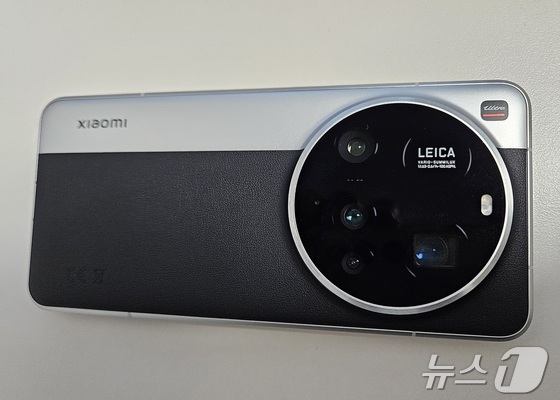
The design of the Xiaomi 15 Ultra, which was unveiled at Mobile World Congress (MWC) 2025, stood out the most.
The silver chrome model, in particular, featured a rear design reminiscent of old manual film cameras. As a result, the massive camera bump appeared more like an actual lens, making it less obtrusive. The prominently displayed Leica logo—often associated with premium cameras—was also satisfying.
However, when not taking photos, the camera bump proved cumbersome during everyday use. While Xiaomi prioritized camera performance, the resulting protrusion was excessive. The smartphone stood as high as another phone stacked beneath it when placed on a flat surface.
The camera bump’s size, occupying about two-fifths of the smartphone’s width, meant users couldn’t avoid touching the lens area when holding the device horizontally.

The most talked-about feature of the Xiaomi 15 Ultra is its camera.
The phone is equipped with a quad-camera system jointly developed with Leica. It features a 50MP 14mm ultra-wide-angle lens, a 50MP 23mm main (wide-angle) camera, a 50MP 70mm telephoto camera, and a 200MP 100mm super-telephoto camera. Leica Summilux lenses were used for this lineup.
The main camera’s 1-inch Sony LYT-900 variable aperture image sensor met expectations. Photos exhibited natural background blur; even low-light shots remained sharp and bright. The dual anti-reflection coating effectively minimizes flare, addressing a common issue in smartphone photography.


Previously, smartphone cameras often left something to be desired compared to high-end cameras. The Xiaomi 15 Ultra seemed to bridge that gap significantly.
The so-called Leica color science, passed down from the film camera era, was also well-expressed. The default camera app includes two Leica modes: Authentic (warm tones) and Vibrant (vivid tones).
The performance of the 200MP super-telephoto camera was also satisfying. At a low-light event, the super-telephoto camera produced sharp images that were good enough for use in news articles.
Video recording supports up to 8K at 30 frames per second (FPS) and 4K at up to 120 FPS.


The Xiaomi 15 Ultra features the same mobile processor (AP) as the Galaxy S25 Ultra, the Snapdragon 8 Gen 3 Elite. The model released in South Korea has 16GB of RAM and 512GB of storage.
Thanks to the latest AP and ample RAM, high-end games like Genshin’s Impact and Honkai: Star Rail ran smoothly at the highest graphics settings with almost no lag. However, extended gameplay sessions did cause the phone to heat up noticeably.
Benchmark testing on Geekbench 6 showed a single-core score of 2,797 and a multi-core score of 8,540. The Galaxy S25 Ultra, equipped with the same AP, usually scores over 3,000 for single-core and over 10,000 for multi-core, making the Xiaomi slightly underpowered.
Further tests using 3DMark’s Wild Life Extreme and Steel Nomad benchmarks yielded scores of 5,545 and 2,077, respectively—slightly lower than the Galaxy S25 Ultra.

Battery life felt sufficient even during high-spec gaming and high-definition video streaming. The Xiaomi 15 Ultra packs a 5,410mAh battery and supports 90W wired and 80W wireless HyperCharge.
However, the model released in South Korea has a downgraded battery compared to the Chinese version, which offers a 6,000 mAh capacity. The 90W wired and 80W wireless charging speeds appear to be supported only when using Xiaomi’s proprietary charger. When using a third-party 65W charger, the harging peed dropped to about 20W.
Despite the smaller battery, the South Korean model includes Google’s Gemini AI features and supports Google’s Circle to Search functionality.
The built-in AI features Xiaomi’s operating system provided—such as AI writing, voice recognition, and image editing—were all sufficient. Particularly impressive was the fast and accurate real-time voice recognition during recordings.
However, call recording notifies the other party—similar to iPhones—and the lack of Samsung Pay support could be considered a disadvantage in the Korean market.
The Xiaomi 15 Ultra’s South Korean retail price is approximately $1,150, which is significantly cheaper than the global launch price of $1,555.
Considering that the Galaxy S25 Ultra, which has similar specifications (512GB storage but only 12GB RAM), is priced at around $1,175 in South Korea, it’s clear that Xiaomi strategically lowered the price to stay competitive.
Still, the price difference isn’t substantial. Given that the Xiaomi 15 Ultra clearly outperforms only in terms of the camera, it remains to be seen whether it will appeal to Korean consumers beyond a niche group of Leica enthusiasts.
